When Rev. Jim Keenan joined Saint Luke’s United as an intentional interim minister in the fall of 2019, he knew there was much work to do. Located across from the iconic Allan Gardens park in downtown Toronto, the towering church had long been a fixture in the historic Cabbagetown neighbourhood. “It’s a place in the city where gentrification and poverty grind like tectonic plates,” Keenan said. At the time, Saint Luke’s had already been operating a food bank and was renting out space to over a dozen local arts and social services organizations.
But the church’s coffers were far smaller than they had been in the ‘70s. “They had this huge building that was draining any resources that they had,” said Keenan. He estimated that when he started his position at the church, maintenance costs exceeded rental income by about $60,000 a year. “The way they were serving the community wasn’t working in a sustainable way,” he said.
You may unsubscribe from any of our newsletters at any time.
A month after Keenan entered his role, Saint Luke’s experienced another blow. The plan to redevelop the church into a series of condos and a small chapel was rejected by city council. The congregation was disheartened. “The congregation, for about seven or eight years, really didn’t grow in terms of their sense of mission and their sense of vitality,” said Keenan. The church was also physically deteriorating — despite its condition, it had not undergone any major repairs since the congregation had anticipated redevelopment.
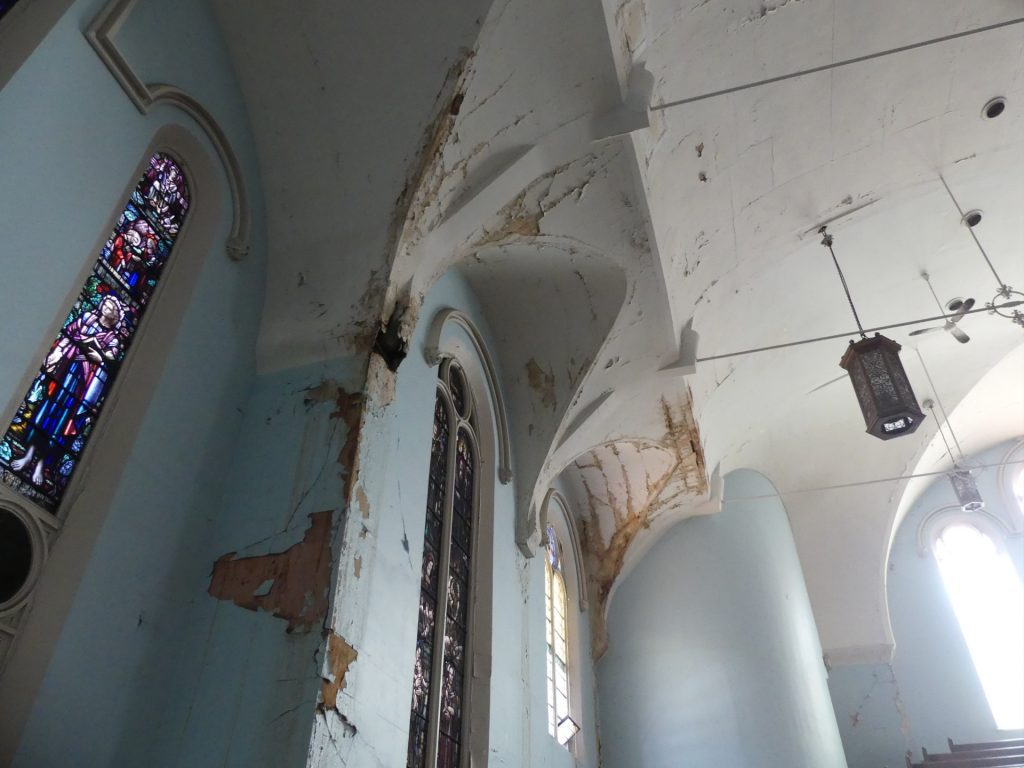
These challenges aren’t unique to Saint Luke’s. As buildings age and church attendance continues to decline, churches across the country are grappling with questions about their role in the community. Many churches have opted to have private developers build condominiums, with the place of worship reduced to a small chapel. But some are looking for ways to preserve the mission of the church while reimagining their place in the neighbourhood.
A new company called Kindred Works is proposing one such alternative. Developed in response to the housing and climate crises, Kindred Works wants to transform church properties into mixed-income rental housing and community spaces. The company launched last month with the goal of housing 34,000 people over the next 15 years.
Kindred Works is also aiming to make at least a third of the housing units available below market rent. Other goals include spending at least 80 per cent of project costs on local labour and businesses, and, by 2030, producing 80 per cent less carbon in construction than today’s industry standard.
Kindred Works’s CEO Tim Blair said the company presents solutions that make use of underutilized urban space and continue to serve community interests, unlike luxury condos.
“There is a way to deliver legacy, maintain the common good and really address those big issues that we’re facing,” he said.
Kindred Works functions as the development and asset management arm of the United Property Resource Corporation, which was created by The United Church of Canada to help communities of faith manage their properties. Kindred Works currently has eight active projects that are going through municipal planning processes, with seven in southern Ontario and one in Saint John, N.B.
You can read more about Kindred Works’s other projects in the map below.
“Kindred Works, both from the leadership of staff but also just conceptually, is probably one of the most exciting things to happen in the life of the church for a while,” said Rev. Michael Blair, general secretary of The United Church of Canada.
He added that Kindred Works encourages communities of faith to think about their properties as a resource to help sustain the United Church’s ministry. The company models a creative, collaborative way of supporting local congregations while leaving room for them to address neighbourhood-specific needs.
“Church buildings have historically been about communities and community building, whether that is through the worship expression or through being a space for people to gather to deal with both joys and challenges in their lives,” said Michael Blair. “This is a 21st-century way of reimagining communities by redeveloping our properties.”
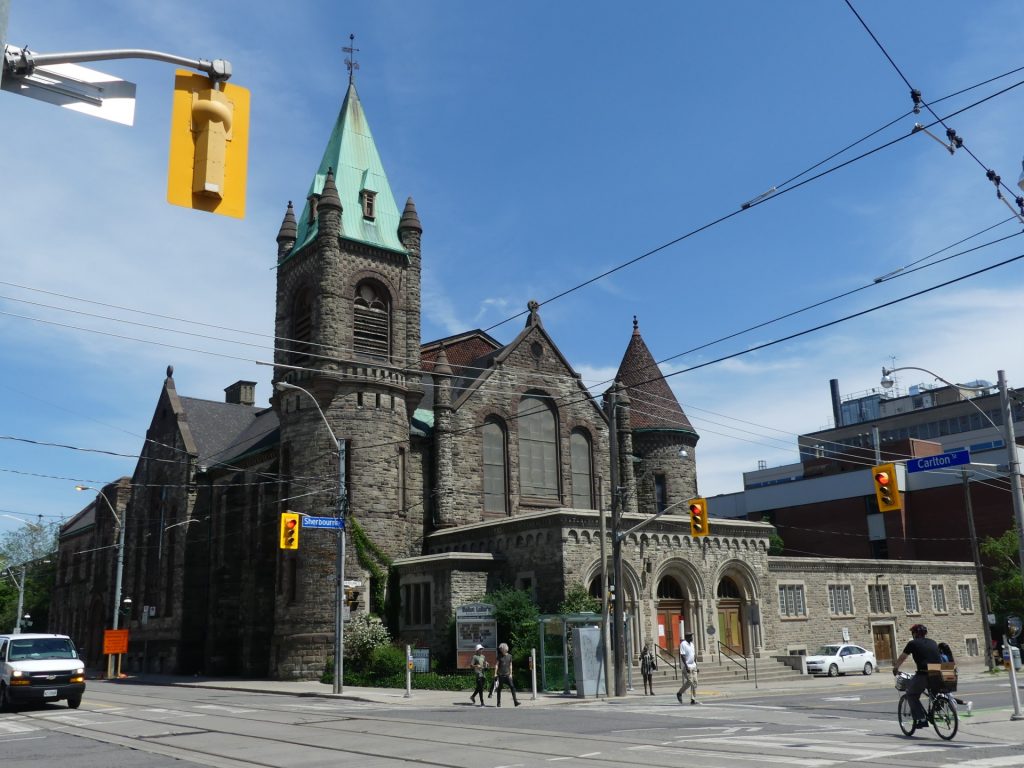
At Saint Luke’s, Kindred Works’s proposal includes a 12-storey mixed-use development. The architecturally distinct buildings surrounding the original 1887 Romanesque church — which were added in the early to mid-1900s — will be torn down to make room for 100 rental apartments.
Kindred Works also hopes to build new community spaces here, including an outdoor plaza and a second-floor terrace. While the first half of the sanctuary will be refurbished, the second half will become rentable venue space with onsite catering facilities. As with Kindred Works’s other planned projects, income from the rentable venue spaces and rental housing will help sustain the church, with profits reinvested in the community through the congregation.
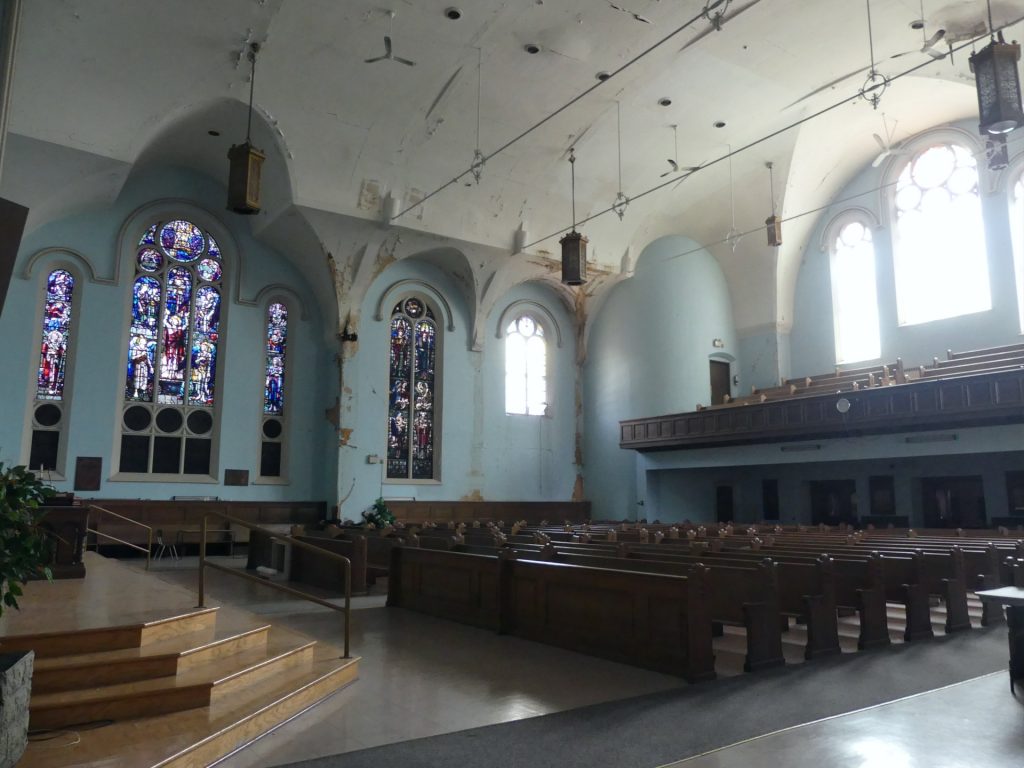
Meanwhile, at Queenswood United in Orléans, Ont. near Ottawa, Kindred Works is planning to build a mixture of three-storey townhouses and three-storey walk-up apartments. The development will introduce 81 homes while enhancing the existing church.
Rose Marie MacLennan, chair of Queenswood’s property development committee, said the project will allow the congregation to realize its dream of building affordable housing.
“We’re not doing this for our church — we’re not looking for new members,” she said. “It really is for the common good of the community. It is a space that is not being actively used in terms of our property, so it can be put to good use to provide housing for folks.”
While community members have expressed worry towards increased traffic in the area, MacLennan said the development team is committed to addressing all concerns.
“It’s change for the current neighbours of the neighbourhood,” she said. “There’s a real desire to work with neighbours and work through any issues that come up.”
More on Broadview:
- The United Church is changing its model of ministry — for better or for worse
- Community land trusts could help provide affordable housing we so desperately need
- New development corporation to keep real estate in the United Church
Noticing similarities across the United Church’s property portfolio has allowed Kindred Works to build smarter and better, says CEO Tim Blair. This enables the company to present churches with a streamlined development process while still making room for site-specific needs. The approach has helped the company reduce operating costs without sacrificing construction quality and environmental sustainability.
Kindred Works has also been working with Indigenous architects to consider the history of a site on a much longer timeline, using a generational framework to think about a building’s impact on a scale of thousands of years.
“I truly hope that these projects became an exemplar for this new approach to property development,” said Tim Blair. “We’re striving to create this idea of inclusive, economic, social and sustainable benefits for everyone.”
For Keenan, Kindred Works’s plans for Saint Luke’s reflect their extensive joint community consultation process and the congregation’s renewed vision. He says Saint Luke’s gained its name as the “House of Friendship” back in 1929, when the church’s first minister put up a neon sign on the street corner to welcome lonely young men who had left rural communities. The church’s spirit of responding to community issues through faith is longstanding, said Keenan.
“The key here is the congregation understanding that if they’re going to survive and thrive and do the work that they’ve been called to do, they have to find their place in the local community and become an influencer,” he said. “That kind of engagement has to come from their worship, from their sense of what they’re being called to do as Christians, as followers of Jesus.”
“The Christian story is a pretty good story,” he said. “It adds something distinctive and substantial to the common good, and we have to learn how to be able to tell it in our neighbourhood.”
***
Tobin Ng is an intern at Broadview.

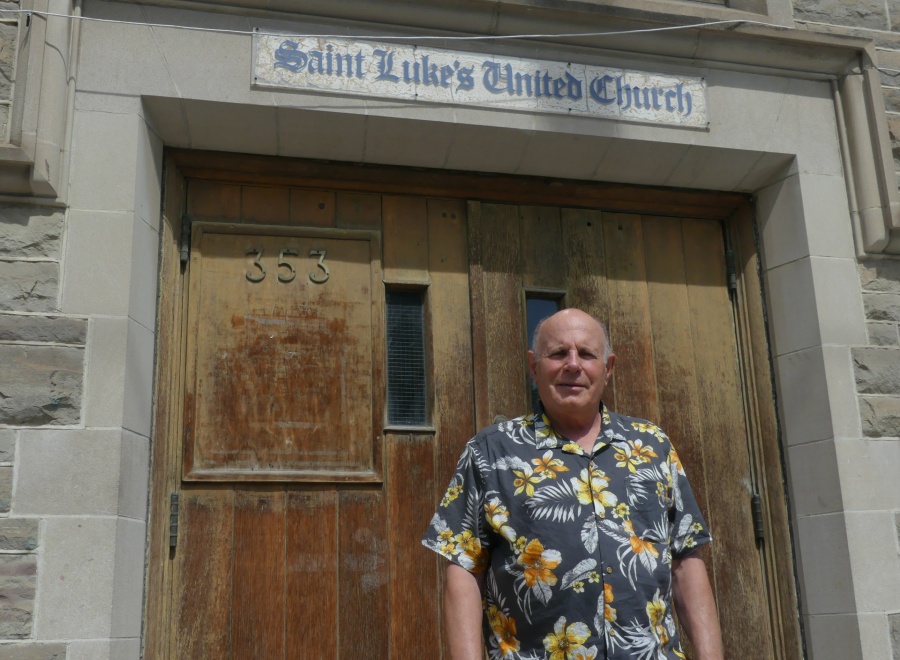









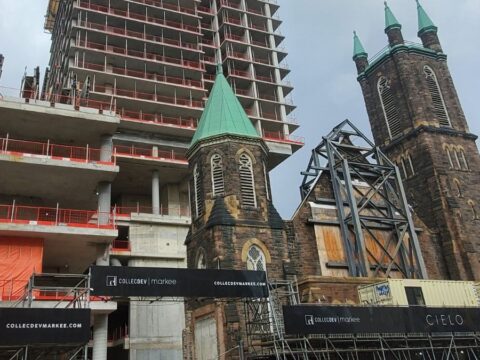



This is NOT a new thing. the changing of church & property has been going on for a few decades. Tansley Wood U.C. in Burlington is an example. There are many other now using this model.
How well are they working as a support to an ongoing church ???
That’s the key question.